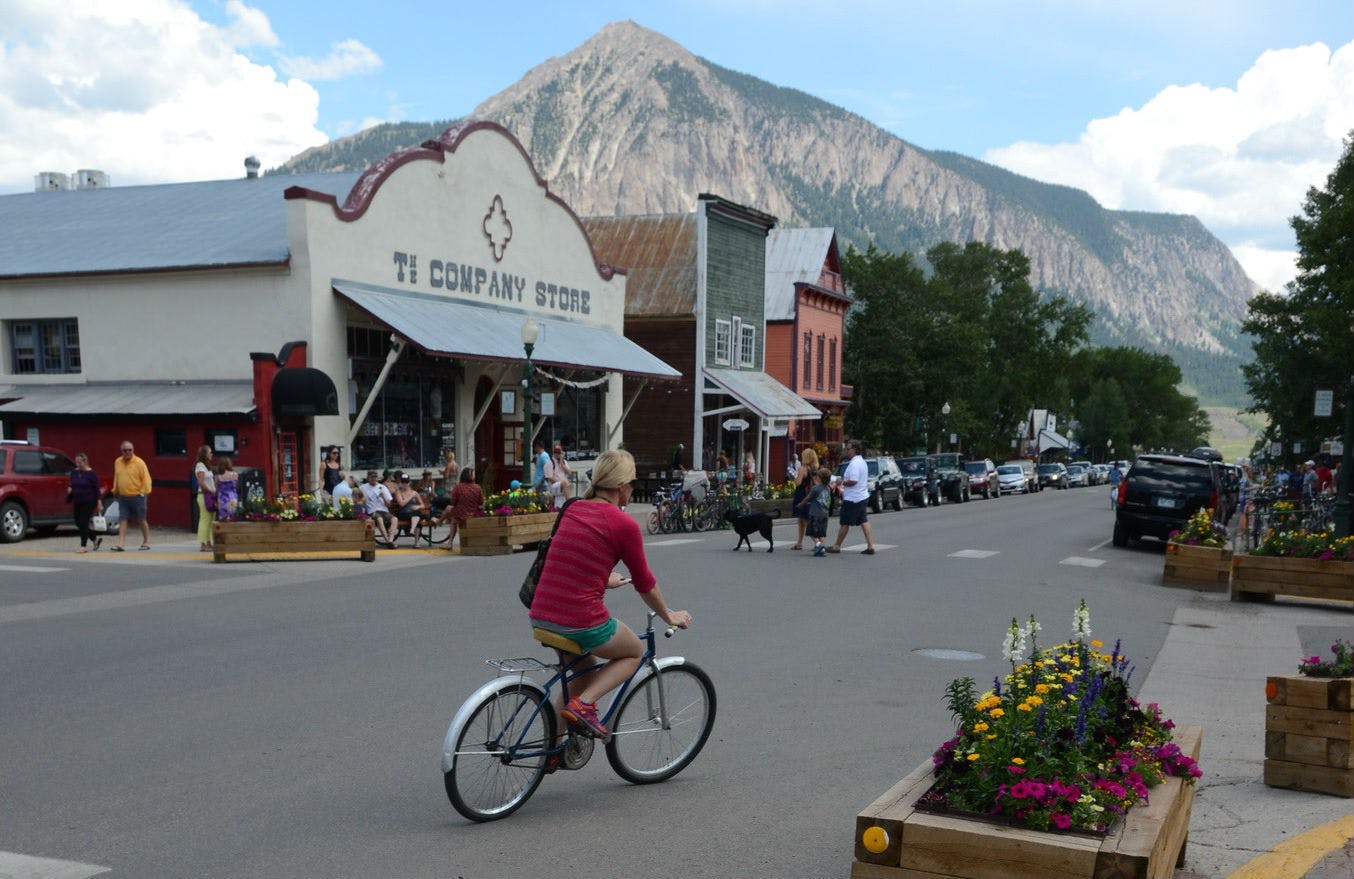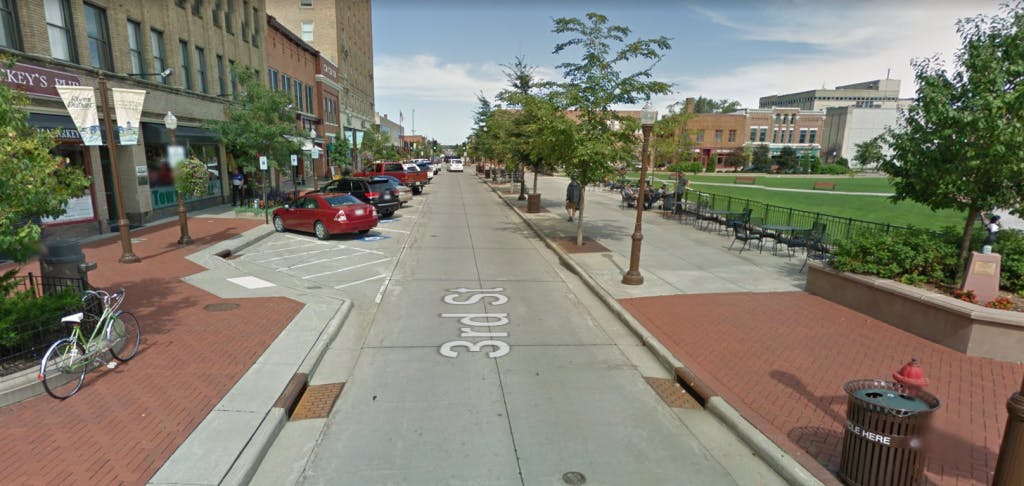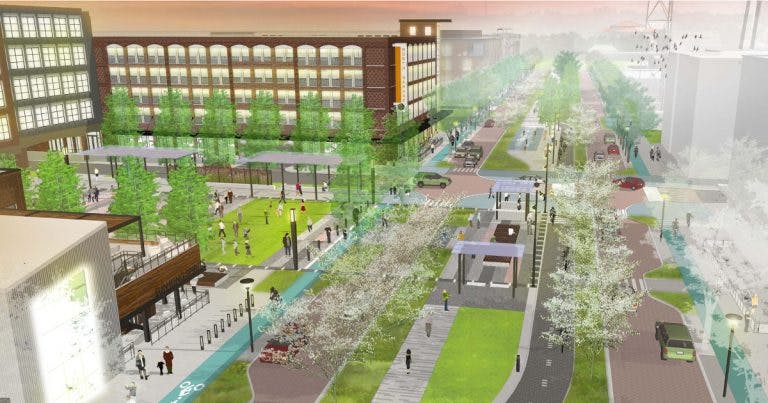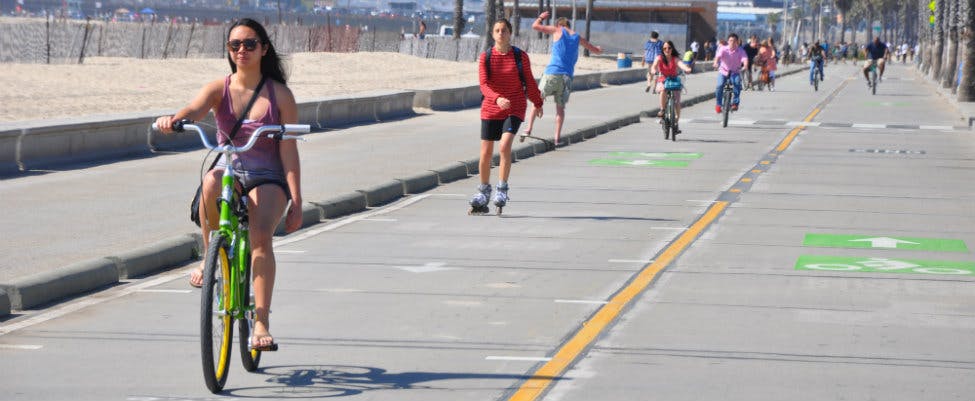America’s Five Best Small Cities for Biking
By: Michael Andersen, PlacesForBikes staff writer

Could a bunch of the country’s best cities for biking be towns that most Americans have never heard of?
That’s one unexpected implication of the PlacesForBikes City Ratings, which balances complex data from six sources to compare cities to one another based not on reputation but on factors like low-stress network connectivity, safety and documented public investment.

It definitely surprised us here at PeopleForBikes that Wausau, Wisc., came out as a better place to bike than Minneapolis, Portland, Ore., or Davis, Calif. But the whole point of a data-driven system is to discover things you didn’t expect.
And the fact is that smaller cities and towns have massive potential for biking. The main problem is actually that a lot of people haven’t realized it yet.
Small cities and towns have huge potential for good biking

“It’s comfortable, it’s fun and it’s convenient,” said Brad Sippel, bicycle and pedestrian planner in Wausau, population 39,000. “It takes me 7 minutes to get to work by bike and it takes me 7 minutes to get to work by car.”
That’s the story in a lot of small cities, said Kyle Wagenschutz, director of local innovation at PeopleForBikes — whether or not they’ve installed protected bike lanes and other dedicated low-stress infrastructure.
“There’s generally not a lot of people driving at high speeds in their communities, so they generally have really good safety records,” he said. “Their street networks have the bones of essentially a really strong bicycle network because of the low volumes, low speeds, particularly if a big state highway doesn’t run right through the middle of town. If it runs outside or loops around the city, that creates a natural sort of environment for the bicycle to occur.”
Where most small cities stand out: Momentum, not yet ridership

People in smaller cities and towns have biked for transportation since biking began. (Just ask Toto.) But one unique thing about small towns is that there isn’t much biking to work — in part because so many residents commute long distances to jobs.
Unfortunately, biking to work is the kind of biking Americans measure best. That’s part of the reason almost no small cities in the PlacesForBikes rating system do well on our “ridership” metric.
Instead, most of the small towns that topped our list stood out for a different metric: acceleration.
That’s our measure of how much investment cities are making in improving biking: 80 percent of it comes from the scale and variety of infrastructure and encouragement reported by city officials in the 15-question PlacesForBikes City Snapshot, and 20 percent comes from local public opinions about bike investments gathered by the annual PlacesForBikes Community Survey.
“For the last few years and the next few years we’ve been putting in 15 miles of path,” said David Littlejohn, the alternative transportation coordinator in Carmel, Indiana, population 92,000. Carmel landed the nation’s No. 3 rating for small cities, largely on the strength of its rapid investment in a low-stress biking network.
Because the “acceleration” score tracks progress with percentage changes year on year, cities with smaller low-stress networks, bike sharing systems and public bike parking inventory will find it easier to be recognized for acceleration. The effect is that it’s hard for any city to rest on laurels — and also that any city can muscle its way up in the ratings by working hard.
In a global marketplace, good biking is a tool for economic growth

In many small cities, the case for accelerating bike improvements is similar: economics.
“Our city council’s been behind this from the start,” said Andrew Lynch, a transportation planner for the Wausau Metropolitan Planning Organization. “And why is that? They have to be. … Smaller cities need to do anything they can to be attractive for people to stay there and people to come there. And bicycling is one of those.”
Littlejohn, the Carmel alternative transportation coordinator, agreed.
“We see a lot of benefits in biking,” he said. “We see it as a tool for economic development, to attract employees to our businesses and our headquarterses here. We see it as an amenity to our residents so they can have a healthy way to get around.”
In a suburban area like Carmel’s, Littlejohn said, densities may be increasing but biking often remains more viable than mass transit. Bikes are well-suited to suburbs simply because they’re more similar in nature to cars.
Small cities and towns have huge challenges to overcome, of course. Small tax bases make change difficult. Biking can seem alien or unserious. And as with all cities, there’s the ever-present risk of thinking that the status quo is good enough.
“The last five years there’s been a lot of activity,” said Kyle Kozar, the bike coordinator in Santa Monica, which landed the No. 2 PlacesForBikes rating for small cities in 2018. “We still have a lot of work to do.”
Related Topics:
Related Locations:
